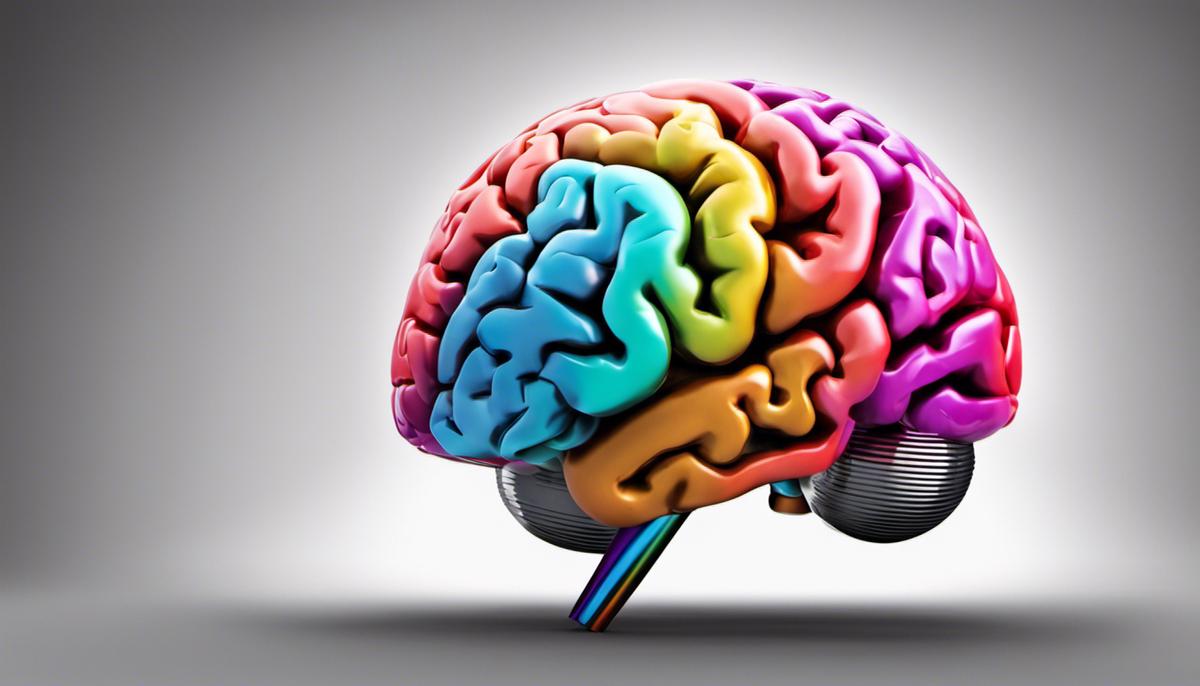Stress, a seemingly inherent part of modern life, poses a significant challenge to health and well-being. Understanding its roots and repercussions, both biological and psychological, is crucial for devising strategies to manage and diminish its effects. Integral to this understanding is the important symbiotic relationship between exercise and the human brain. Regular physical activity triggers physiological changes within our bodies and minds that can enhance mood, memory, and mitigate anxiety. Recognizing this, it becomes clear why exercise is increasingly being acknowledged as a viable natural stress-relief technique. However, the key is not just to engage in random physical activity, but to incorporate regular and consistent exercise into our daily routines. This doesn’t merely involve adhering to arduous workout schedules but incorporates an understanding of individual lifestyles and preferences, to craft a well-rounded, stress-reduced way of living.
Table of Contents
Understanding Stress: Its Causes and Impacts
An Examination of Stress: Its Causes, Consequences, and Implications
By delving into the vast expanse of the human psyche, one discovers multiple aspects that construct the complex scaffolding of the mental realm. One such intriguing facet is stress – an omnipresent psychological phenomenon that molds, shapes, and sometimes distorts the ebb and flow of human existence.
In the narrowest scientific sense, stress is a state of mental or emotional strain, typically induced by adverse or demanding circumstances. Drawing analogy from physics, where stress describes pressure or tension exerted on a material, this term in psychology delineates the pressure that individuals experience, born out of interactions with their environment.
A cascade of biochemical reactions unfurls when an individual encounters a stressor. The Hypothalamic-Pituitary-Adrenal (HPA) axis, intricately designed for responding to stress, springs into action. Cortisol, commonly known as the “stress hormone,” is secreted, heightening alertness, and priming the body for the “fight or flight” response.
Delving into the crux of causations, it is invariably established that stressors – the provocateurs of stress, are an integral part of life’s fabric. These range from salient taxing events such as job loss, debilitating health, or the loss of a loved one, to seemingly mundane daily hassles like traffic congestion or incessant noise.
Noteworthy is that individual perception plays a cardinal role in qualifying events as stressors. An event can incite stress in one individual, yet, the same circumstance might be deemed trivial or even stimulating by another.
The effects of stress are manifold and traverse the domains of physical health, mental well-being, and social functioning. Chronic stress exposure has detrimental health implications. It can augment the risk for a multitude of ailments, including cardiovascular diseases, hypertension, and immune disorders.
On the psychological front, persistent stress can signal the advent of mental health disorders such as depression and anxiety. Interestingly, psychological stress can also impede on cognitive functioning, impairing memory, attention, and decision-making faculties.
It does not stop at affecting an individual in isolation. Stress has overarching implications for social dynamics, impacting interpersonal relationships and work performance, thereby influencing broader societal and organizational contexts.
From the canvas of neuroscience to the societal scale, stress weaves a complex tapestry. Understanding this multifaceted phenomenon, therefore, remains crucial for devising effective stress management and resilience-building strategies. I hope the revelation of these facets of stress augments understanding and encourages further exploration in this field. The scientific pursuit of unraveling the threads of stress continues, unveiling not only individual implications but the intricate interplay of the individual within society at large. The journey is infusing optimism into the realm of enhancing individual and community resilience in the face of stress.

Exercise and The Human Brain: A Symbiotic Relationship
Physical Exercise and Its Influence on Brain Function and Mental Health
The relationship between physical exercise and brain function is a multifaceted entity that continues to enthrall academic and scientific investigators alike. That an active body parlays into an active mind is not merely an aphorism, but a scientific fact underscored by a myriad of research in neuroscience and psychology. Consistent physical exercise elicits profound alterations within the functionality of the brain and consequently, impacts mental wellbeing.
Neurons, the vital units mediating cognitive performance, display enhanced function under the influence of exercise. Rigorous physical activity stimulates the release of growth factors—chemicals that aid the health of brain cells, the growth and survival of new neurons, and the establishment of connections or synapses between neurons. Cognitive processes such as learning and memory, hence, derive significant benefits from an active lifestyle. For instance, research corroborates the positive influence of physical exercise over executive functions, such as attention control, inhibitory control, working memory, and cognitive flexibility.
Moreover, the labyrinth of the human brain is also the home to the heartening reality of neuroplasticity — the capacity of the brain to change and adapt, instigated by environmental stimulus. Physical exercise, as can be surmised, is a compelling trigger for such cerebral malleability. By facilitating the growth of new blood vessels in the brain and affecting the abundance and survival of neural stem cells, consistent exercise evokes impressive modifications in brain structure and connectivity, fostering cognitive adaptability and resistance against brain injury and diseases.
The influences of physical exercise also extend to the realm of mental health. Stress, depression, anxiety—these psychological demons are dauntingly persistent in their onslaught on human well-being. However, exercise emerges as an effective shield against them. Engaging in physical activity results in the secretion of endorphins, so-called “happy hormones,” which engender feelings of happiness and euphoria. Additionally, exercise can act as a natural antidepressant by promoting neural growth, decreasing inflammation, and instigating the creation of tranquilizing patterns in the brain. It ultimately culminates in improved mood, lowered anxiety levels, and enhanced self-esteem.
Furthermore, the myriad of studies probing the correlation between exercise and sleep reveal interesting insights. Regular physical activity can contribute to better sleep by helping control the timing of our body’s internal clock, or circadian rhythm, in addition to reducing sleep disorders such as insomnia. Sleep, with its regulatory role over mood and emotional health, thus, gets a considerable boost from physical exercise.
Such positive outcomes of consistent physical activity undeniably establish its pivotal role in maintaining and improving cognitive and mental health. However, the underlying mechanisms that bridge exercise and brain function are still under rigorous investigation. The exploration continues, with profound implications for the enrichment of our individual vigor and societal vitality.

Exercise as a Stress-Relief Technique
Building upon the overview of stress, and its profound influence on both physiology and mental functioning, it is intriguing to examine the potential role of regular exercise as a strategic tool in stress reduction and management. Diverse studies concur on the practical benefits of this, but to truly appreciate it, an exploration into the biological processes involved is warranted.
Under conditions of stressful stimuli, the body responds by producing Glucocorticoids (GCs), steroid hormones designed to manage the situation. Their secondary effects include influencing metabolism, immune responses, and brain functioning. Indeed, the HPA axis, already discussed, exerts a strong influence on regulating the amount of circulating GCs. However, an excess or chronic presence of these hormones, often due to unremitting stress, can result in detrimental health issues, including atrophy of brain regions associated with memory and emotional regulation.
Exercise works on several fronts to modulate these processes. Physiologically, it is recognized that regular physical activity correlates with the moderation of GCs in the bloodstream, believed to be supported by a reduction in the reactivity of the HPA axis to stress signals. This leads to an overall diminished stress response, thereby decreasing the exposure duration and potential damage of the GCs.
On a cognitive level, physical exercise is known to enhance the concentration of brain-derived neurotrophic factor (BDNF), a key player in the formation and strengthening of neuronal connections or synapses. BDNF functions as a form of synaptic plasticity, fundamental to learning and memory processes. Exercise-induced increases in BDNF can contribute to enhanced cognitive ability and mental clarity, equipping individuals with improved problem-solving capacities and resilience to stress-inducing situations.
Furthermore, aerobic exercise, in particular, tends to stimulate the release of β-endorphins, natural painkillers, by the pituitary cells in the brain. These contribute to a sense of well-being and trigger a positive emotional state, colloquially known as the “runner’s high”. This post-exercise euphoria is linked to a rise in mood and reduced anxiety, aspects critical to stress management.
Another essential consideration is the impact of regular exercise on sleep patterns. Chronic stress has been found to disrupt sleep patterns and quality, exacerbating the effects of stress as optimal sleep is vital for both physical recovery and cognitive functions. Exercise facilitates more consistent sleep schedules and better sleep quality, ultimately enhancing the body’s resilience against stress, and facilitating the necessary restoration of the physical and emotional health.
In conclusion, the biochemical and psychological pathways influenced by regular exercise emerge as promising strategic tools in combating and managing stress successfully. While a significant amount of research already supports these assertions, the endeavor to deepen the understanding of their precise workings continues. Ultimately, it is the integration of such knowledge into individual lifestyles and societal frameworks that holds the key to transforming science into tangible health benefits.
Incorporating Exercise into a Healthy, Stress-Reduced Lifestyle
Delving into the question of how one can systematize regular exercise into their routine in order to reduce and manage stress, it is crucial to touch upon the scientific underpinning of this health-promoting practice. An abundance of scholarly studies, in fact, link voyages of physical activity to the world of stress relief.
The pioneering researcher Hans Selye gave the world the ‘General Adaptation Syndrome‘ model, which asserts that the human body, while responding to stress, showcases three distinct phases: the alarm reaction, resistance, and exhaustion. Short bursts of stress or ‘eustress’ can help make an individual more alert and well prepared, triggering the body’s alarm reaction. However, chronic stress forces the body into the resistance phase, which can drain the individual’s physical and mental energy reservoirs. Regular exercise can act as a productive stressor, thereby helping the body build a higher stress response.
Regular physical activity, compellingly, also aids in muscular tension release. On a physiological dimension, exercise propels the body to produce a higher amount of endorphins, neurotransmitters known for their analgesic effect and ability to promote feelings of well-being.
Maintaining regular workout schedules enhances one’s circadian rhythms, bringing a better balance between rest and physical activity periods. Regular aerobic exercise, for instance, can improve rapid eye movement (REM) sleep, often associated with dreaming and memory consolidation.
Scientifically, exercise also has positive implications for the autonomic nervous system that acts like a control system, functioning largely unconsciously and regulating bodily functions such as the heart rate and digestion. Exercise helps prompt a ‘switch’ from sympathetic nervous system (SNS) dominance — characterized by heightened stress levels — toward parasympathetic nervous system (PNS) dominance; a state often referred as ‘rest and digest’ mode.
Drawing on the nexus of exercise and cognition — regular exercise can steer an increase in hippocampal volume, which positively affects spatial memory and lowers the risk factor for various neurological diseases. Moderate intensity exercise catalyzes the expression of nootropic factors like BDNF, IGF-1, and VEGF which play a pivotal role in cognitive function enhancement.
Simultaneously, physiologically, exercise can prompt changes in mitochondrial health and biogenesis and alter an individual’s gut microbiota; these are aspects of health considered instrumental in regulating moods and curtailing anxiety levels.
The potential of physical activity to serve as an adjunctive therapy for individuals possibly struggling with mental health issues is currently under an increasing research lens. However, the practical integration of these research findings into daily life remains a challenge.
The creation of an environment conducive to exercise, in schools and workplaces alike, must become a social priority. Affordable and accessible recreational spaces, along with psychological interventions helping individuals navigate individual barriers related to exercise adherence, hold the key to a healthier society. The incorporation of science-backed exercise routines, in essence, may not only hold profound impacts for the individual’s physical wellbeing but potentially also titrate the myriad burdens of chronic stress.

As we navigate an increasingly hectic world, the importance of consistent physical activity cannot be emphasized enough. Regular exercise not only fosters physical health, it acts as a pivotal switch that can toggle our stress levels, enabling clearer thinking, improved mood, and a more peaceful life. The positive effects of exercise are neither transient nor elusive; they seep into our brains, enhancing neural connections, and permeate our daily lives, enabling us to manage and potentially shrink our stress curves. It does require effort and commitment, but the insights offered by scientific research provide tangible evidence that it is more than worth it. As we seek to employ these strategies, it’s vital to remember that balance is key, acknowledging the importance of a comprehensive approach towards managing stress, preventing it from gaining undue dominion over our lives.

Rajan Moonbeam is a dedicated health writer with a Master of Public Health (MPH) degree. Specializing in holistic wellness and preventive care, Rajan combines scientific research with natural approaches to health, offering readers practical advice on living their healthiest life. His work is a beacon for those seeking to navigate the path to well-being with integrity and balance.

